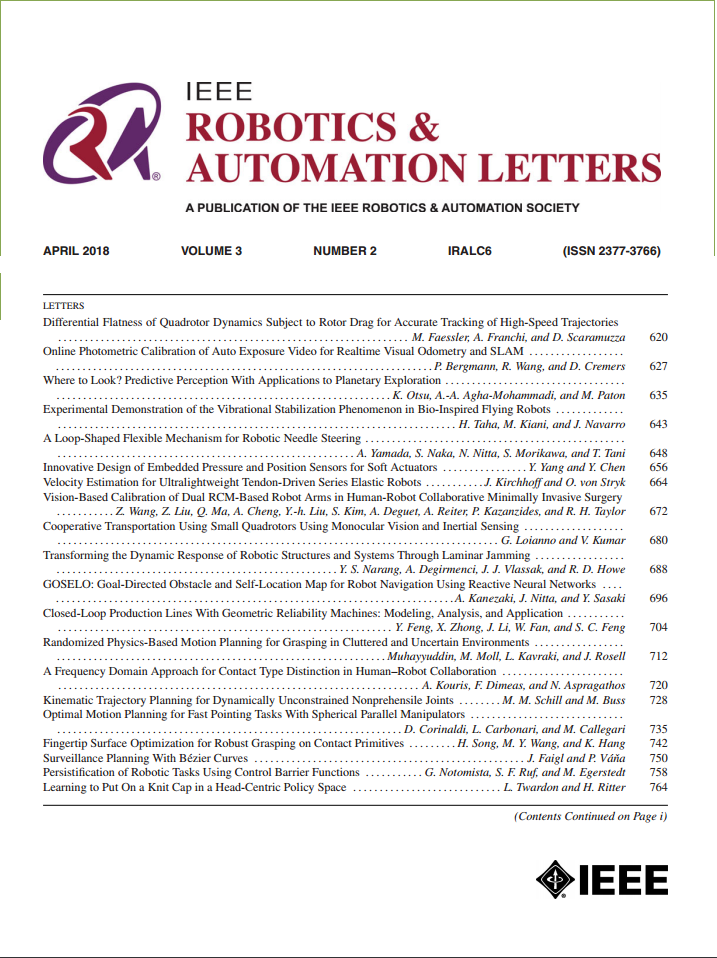Variable Impedance Control for Floating-Base Supernumerary Robotic Leg in Walking Assistance
IF 4.6
2区 计算机科学
Q2 ROBOTICS
引用次数: 0
Abstract
In human-robot systems, ensuring safety during force control in the presence of both internal and external disturbances is crucial. As a typical loosely coupled floating-base robot system, the supernumerary robotic leg (SRL) system is particularly susceptible to strong internal disturbances. To address the challenge posed by floating base, we investigated the dynamics model of the loosely coupled SRL and designed a hybrid position/force impedance controller to fit dynamic torque input. An efficient variable impedance control (VIC) method is developed to enhance human-robot interaction, particularly in scenarios involving external force disturbances. By dynamically adjusting impedance parameters, VIC improves the dynamic switching between rigidity and flexibility, so that it can adapt to unknown environmental disturbances in different states. An efficient real-time stability guaranteed impedance parameters generating network is specifically designed for the proposed SRL, to achieve shock mitigation and high rigidity supporting. Simulations and experiments validate the system's effectiveness, demonstrating its ability to maintain smooth signal transitions in flexible states while providing strong support forces in rigid states. This approach provides a practical solution for accommodating individual gait variations in interaction, and significantly advances the safety and adaptability of human-robot systems.浮基辅助行走机械腿的变阻抗控制
在人-机器人系统中,在存在内部和外部干扰的情况下,确保力控制期间的安全至关重要。作为一种典型的松耦合浮基机器人系统,多余机器人腿(SRL)系统特别容易受到强烈的内部干扰。为了解决浮动基座带来的挑战,我们研究了松散耦合SRL的动力学模型,并设计了一个混合位置/力阻抗控制器来适应动态扭矩输入。提出了一种有效的变阻抗控制(VIC)方法,以增强人机交互,特别是在有外力干扰的情况下。VIC通过动态调整阻抗参数,提高了刚性和柔性之间的动态切换,使其能够适应不同状态下的未知环境干扰。针对所提出的SRL,专门设计了一个高效、实时稳定、保证阻抗参数生成的网络,以实现减振和高刚性支撑。仿真和实验验证了系统的有效性,证明了其在柔性状态下保持平稳信号转换的能力,同时在刚性状态下提供强大的支撑力。该方法为适应人机交互中的个体步态变化提供了一种实用的解决方案,并显著提高了人机系统的安全性和适应性。
本文章由计算机程序翻译,如有差异,请以英文原文为准。
求助全文
约1分钟内获得全文
求助全文
来源期刊

IEEE Robotics and Automation Letters
Computer Science-Computer Science Applications
CiteScore
9.60
自引率
15.40%
发文量
1428
期刊介绍:
The scope of this journal is to publish peer-reviewed articles that provide a timely and concise account of innovative research ideas and application results, reporting significant theoretical findings and application case studies in areas of robotics and automation.
 求助内容:
求助内容: 应助结果提醒方式:
应助结果提醒方式:


